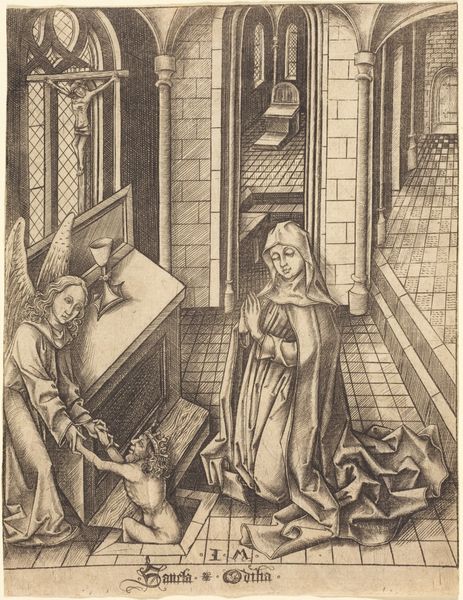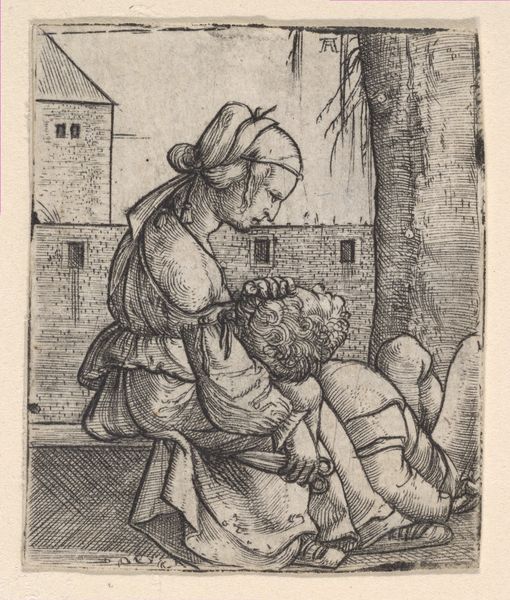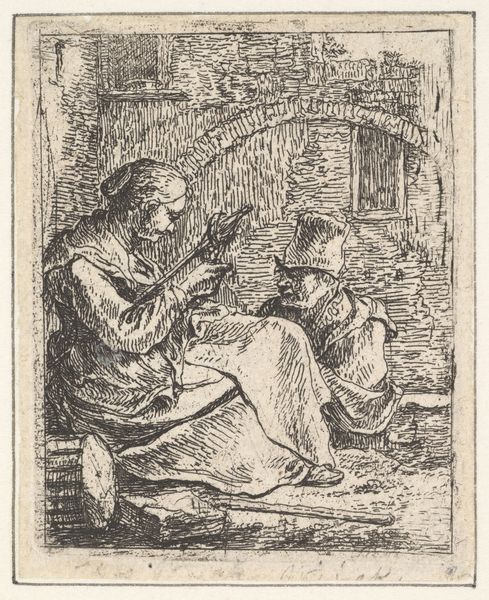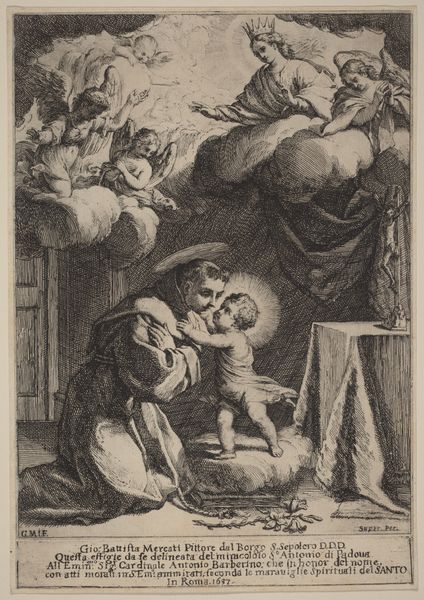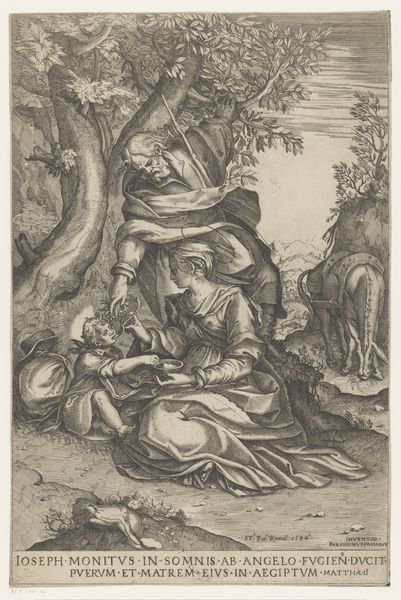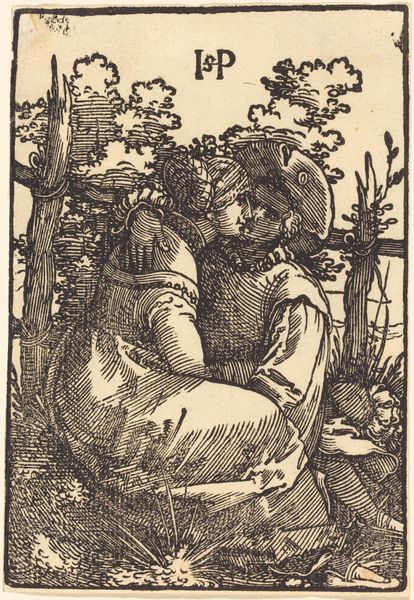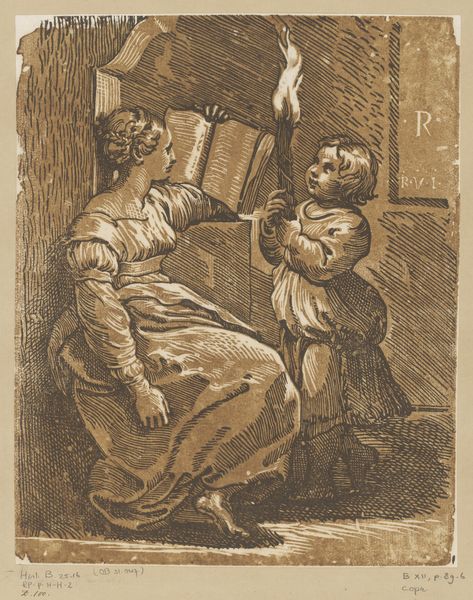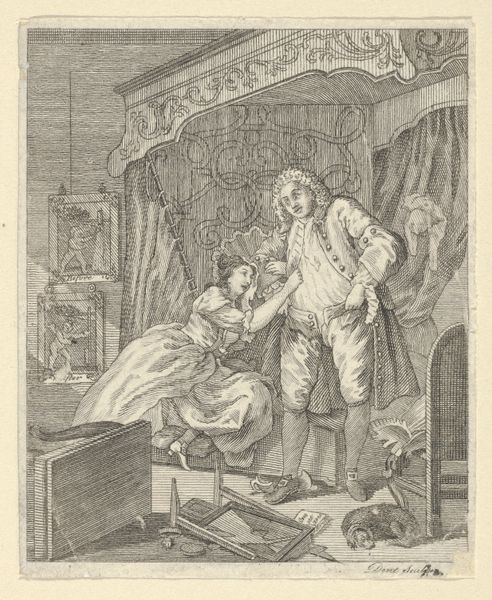
drawing, print, woodcut
#
portrait
#
drawing
#
pen drawing
# print
#
pen illustration
#
pen sketch
#
figuration
#
madonna
#
child
#
woodcut
#
genre-painting
#
northern-renaissance
Dimensions: Sheet: 9 1/4 × 7 in. (23.5 × 17.8 cm)
Copyright: Public Domain
Curator: This small but potent woodcut, titled "The Virgin Seated with the Child," was crafted sometime between 1498 and 1531 by Hans Burgkmair, a significant figure of the Northern Renaissance. Currently, it resides here, at the Metropolitan Museum of Art. Editor: It has a serene, almost stoic feeling. The cross-hatching gives everything a strong linear quality, a sense of firmness. Even in a scene usually filled with soft emotion. Curator: Burgkmair's use of line is quite distinctive. He creates depth and shadow, all the while conveying a quiet domesticity. Editor: The architectural setting almost overshadows them, doesn't it? The columns, the view... It positions them within a constructed, almost staged reality, rather than something natural. Are we meant to consider them ordinary or exalted? Curator: Precisely, the setting balances the divine with the mundane. Notice the book, the flowers, the simple ewer. These are objects of everyday life, but their presence elevates the scene. Think of it as a slice of daily life touched by grace. It mirrors that beautiful and constant tension that is a Northern Renaissance specialty, like in the works of Durer. Editor: It's interesting how contained the Virgin and Child seem despite the open window. The architectural details create a visual frame within a frame. She doesn't feel like she's part of that vista beyond the pillars, rather she's distinctly separate from it. Almost contemplative in her space. Curator: She's a bridge. The composition, particularly the Madonna's positioning between the indoor still life and outdoor scene, certainly echoes this theme. In many ways it also captures this artist's synthesis of Italian Renaissance elements, like perspective, with local aesthetics to form a distinctly German approach. Editor: A fascinating combination indeed. I like this, though it leaves me a bit wistful, perhaps? It's more about presence than exuberance, if that makes sense. Curator: Absolutely, its stillness speaks volumes. For me it’s Burgkmair inviting us to reflect on the intersection of the divine and everyday, using, yes, very precise, economical lines!
Comments
No comments
Be the first to comment and join the conversation on the ultimate creative platform.



